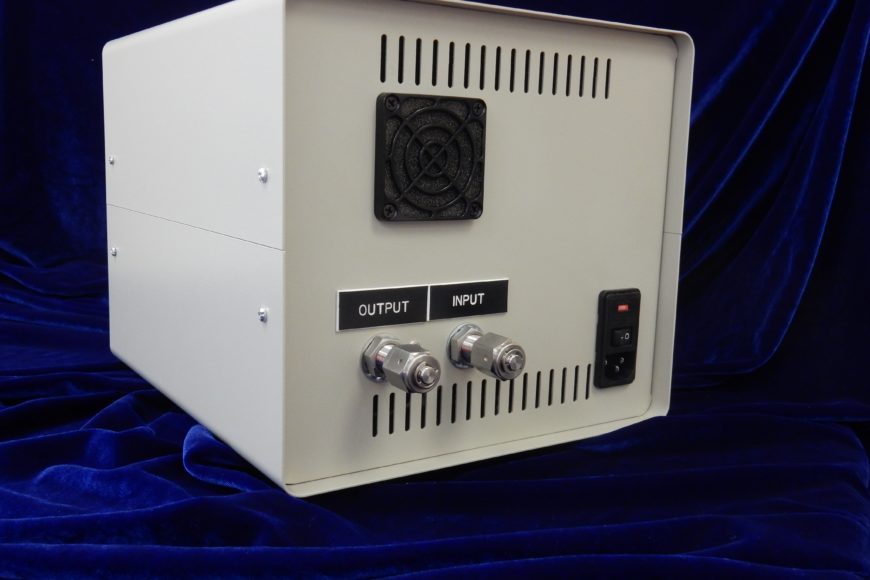
A permeation system is a simple yet effective device used to generate precise gas blends for a wide range of applications, from biological/medical mixing to sensor calibration. Users typically opt for permeation if they require gas mixtures with low-level concentrations, or if their gases are not readily available in bulk formats. Permeation ovens subsequently tend to be custom systems designed for specific use cases. So, how do gas blending permeation systems yield such precise concentrations?
General Design of Permeation Systems
Custom permeation systems are typically comprised of four core elements:
- A permeation oven
- Mass flow controllers
- Temperature controllers
- Disposable permeation tubes
Carrier gas flow through the permeation oven is regulated by the mass flow controllers while the process temperature is determined by the temperature controller. These are simple principles familiar to anyone who regularly blends gas mixtures.
The difference between a permeation system and a conventional gas mixer is the use of permeators in the form of liquid-filled polymeric tubes. These disposable or refillable elements placed within the permeation oven and contain the liquid phase of the component compound. They are designed to incorporate the maximum amount of membrane area per unit volume of gas; ultimately ensuring the most effective contact between the dry vapour form of the gas emitted by the oven and the liquid-phase surface.
Reasons to Use Permeation Tubes
Permeation systems equipped with robust polymeric permeators can reliably generate precise concentrations of volatile compounds. These high vapour pressure compounds can be generated on-demand and used “fresh” for ultimate convenience. Static mixtures contained in cylinders can be inaccurate at low levels—particularly approaching the sub parts per billion (ppb) range, at which trace molecules may be susceptible to adsorption on cylinder walls. It can be extremely difficult—if not impossible—to fully eliminate trace components from gas cylinders. Permeation systems can effectively solve this issue, delivering reliable, high-purity gas mixtures.
Interested in how a permeation oven could help you save money?
Additionally, permeation tubes are compatible with standard process industry components which means easy integration with heat exchangers, piping, valves. Custom permeation systems can therefore be engineered with minimal essential system design. Most tubes for permeation systems are disposable, and so are designed to be easily replaced by non-specialist personnel. These disposable permeation tubes have a finite lifespan, so are discarded once depleted—but they still represent a substantial cost-saving compared to gas cylinders.
Permeation Systems from Environics Environics is an industry-leader in the manufacture of custom gas blending solutions for precision applications. We offer custom permeation ovens with expansive blending capabilities, alongside a new standalone permeation system compatible with multiple disposable permeation tubes. The Series 500 Stand Alone Permeation System is extremely reliable and highly accurate with a temperature stability within 0.1°C. Permeation options are also available for our standard gas calibration systems, to provided added flexibility of your gas source.

